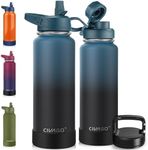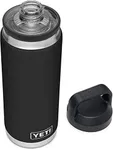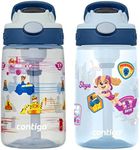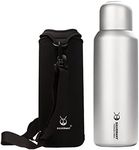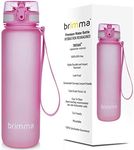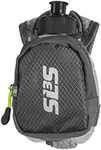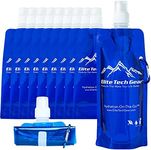Buying Guide for the Best Sports Water Bottles
Choosing the right sports water bottle can significantly enhance your hydration experience during workouts, sports activities, or daily use. The right bottle should be convenient, durable, and suited to your specific needs. Here are some key specifications to consider when selecting a sports water bottle, along with explanations to help you make an informed decision.MaterialThe material of a sports water bottle affects its durability, weight, and safety. Common materials include plastic, stainless steel, and glass. Plastic bottles are lightweight and often more affordable, but they may retain flavors and odors. Stainless steel bottles are durable, often insulated, and keep beverages at the desired temperature, but they can be heavier. Glass bottles are eco-friendly and do not retain flavors, but they are more fragile. Choose a material based on your preference for weight, durability, and taste neutrality.
CapacityCapacity refers to the volume of liquid a bottle can hold, typically measured in ounces or liters. Smaller bottles (12-18 oz) are lightweight and easy to carry, making them ideal for short workouts or runs. Medium-sized bottles (20-32 oz) offer a balance between portability and sufficient hydration for longer activities. Larger bottles (over 32 oz) are great for extended outdoor activities or all-day hydration but can be bulky. Consider your hydration needs and the duration of your activities to choose the right capacity.
InsulationInsulation helps maintain the temperature of your beverage, keeping cold drinks cold and hot drinks hot for extended periods. Non-insulated bottles are lighter and more affordable but do not regulate temperature. Single-wall insulated bottles offer some temperature control but are less effective than double-wall insulated bottles, which provide superior temperature retention. If you need your drink to stay at a specific temperature for hours, opt for a double-wall insulated bottle.
Lid TypeThe lid type affects the ease of drinking and the bottle's leak-proof capabilities. Common lid types include screw tops, flip tops, straw lids, and spouts. Screw tops are secure and leak-proof but require both hands to open. Flip tops and spouts are convenient for one-handed use but may not be as leak-proof. Straw lids allow for easy sipping without tilting the bottle but can be harder to clean. Choose a lid type based on your preference for convenience and leak prevention.
Ease of CleaningA water bottle that is easy to clean will help maintain hygiene and prevent the buildup of bacteria and odors. Bottles with wide mouths are easier to clean by hand or with a brush. Dishwasher-safe bottles offer convenience but check if all parts, including the lid and straw, are dishwasher safe. Consider how often you will use and clean the bottle to choose one that fits your cleaning preferences.
DurabilityDurability is important to ensure your water bottle can withstand regular use and potential drops. Plastic bottles are generally less durable than stainless steel but are lighter. Stainless steel bottles are highly durable and resistant to dents and scratches. Glass bottles are the least durable but are often protected by silicone sleeves. Consider your activity level and how much wear and tear the bottle will endure to choose the right level of durability.
WeightThe weight of the water bottle can affect your comfort, especially during long activities. Plastic bottles are the lightest, making them easy to carry. Stainless steel bottles are heavier but offer better insulation and durability. Glass bottles are the heaviest and least practical for carrying around. If you need a bottle for running or hiking, a lighter option may be preferable. For gym use or daily hydration, weight may be less of a concern.


